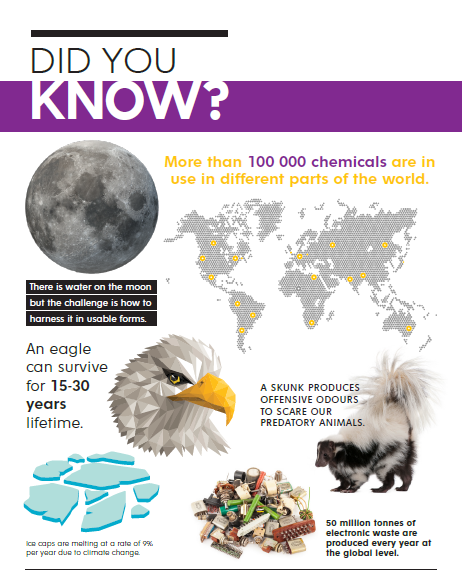The impact of climate change is affecting nations across the globe and it is naturally becoming part of the agenda for every conference. The situation is worse in the coal mining areas. Coal usage is being attributed to worsen climate change due to the increase in emission of greenhouses when burnt to coke or fueling power stations. The coal dust also affects the ozone layer. Hwange Colliery, the Zimbabwe largest coal mining company concession is bearing the brunt of climate change. The coal mining town for the past 3 years has been characterized by flash floods and heat waves which are some of the effects of climate change.
Hwange Colliery is the largest in the country, with proven reserves that are estimated to last over 1,000 years, at current production levels. This means the area is built on top of the black rock. The construction of infrastructure in Hwange demands expert technical advice and specialist structural engineering which puts the underground coal into consideration. This also calls for regular interval checks of the coal bed and rock mechanical analysis. Hwange is under agro-ecological region four of Zimbabwe. The region used to receive an average rainfall of 450mm-600mm per year during the 1980s but there had been notable changes due to the impacts of climate change and global warming. Seasonal dry spells are however rife in the region. According to the Hwange Sanyati Biodiversity Corridor (HSBC) Project Environment and Social Management Framework which the government of Zimbabwe is implementing together with the Global environmental Fund (GEF), seasonal droughts are also characteristic of this region due to the impact of the Botswana Upper High (BUH) from the Kalahari Desert. Rain received this region is mainly conventional since it comes as a result of the southern frontier of the Inter-Tropical Convergence Zone (ITCZ).
Temperatures have significantly increased over time in Hwange with heat waves being recorded since the 1990s. According to the Meteorological Department, Hwange receives on daily basis an average maximum temperature of 34.19˚C, minimum temperature of 33.96˚C. The high temperatures have often resulted in heat waves and heat stress in the region. The temperatures soar higher during the summer accompanied with steady winds, but sweltering effects. Worldwide severe heat waves have caused catastrophic crop failures, thousands of deaths from hyperthermia, and widespread power outages due to increased use of air conditioning.
A heat wave is an extreme weather condition that can be a natural disaster and a danger because heat and sunlight may overheat the human body. To be considered a heat wave such a temperature should last at least one day, but conventionally it lasts from several days to several weeks. The spell normally has the maximum shade temperature reaching or exceeding 90 °F (32.2 °C). But, it depends with the area. In the recent past, Hwange residents have alleged heat waves to be contributing to underground coal fires. Residents say nothing is amiss to them as temperatures they are experiencing during both day and night are extremely hot. “One cannot get used to the high temperature we are experiencing. It’s now a double tragedy. When it rains it storms and flash floods are experienced, after that we return to our normal everyday life of heat waves. Underground coal is absorbing the heat, some infrastructure like roads are cracking and coal seam fires are seen beneath,” said one resident.
In 2021, an 8-year-old child who had gone to relieve herself in a nearby bush was swallowed by the earth when the ground she was standing gave in. She was immediately rescued but was severely burnt by the coal seam fires. After a month she succumbed to the wounds. The incident caused tension between residents with the Hwange Colliery Company Limited (HCCL), with the later saying the area was private property and the victim was a trespasser. The concern of the stakeholders and residents was beyond the legal structure of Hwange Colliery and its properties. A proactive measure was set in place by the company to prevent coal seams fires in the face of severe heat waves and the reaping of roads and other public areas by coal fires. Coal-seam fires can be ignited by self-heating of low-temperature oxidation, lightning, wildfires and even arson. Coal-seam fires have been slowly shaping the lithosphere and changing atmosphere, but this pace has become fast and extensive in these modern times, triggered by enormous mining activities.
On December 24 2021, the Hwange Colliery Company Limited (HCCL) issued a press statement on underground fires. The company said it was alive to the underground fires in its concessions. The company said it will continue with awareness campaigns in schools and community. “Temporary measures such as road diversions to Number 3 village, barricading as well as placement of signage at the affected areas will be taken. In addition, HCCL has invested in a drone that has a thermal camera for security purposes and identification of underground fires. As part of a long-term plan Hwange Colliery engaged a German based specialist company to assist in the necessary interventions. DTM is the only company which offered its services for managing the fires using modern and cost effective methods among other companies which HCCL consulted, “said HCCL in a statement. The meteorological department always warns of dangerous temperatures in Hwange. Particularly high overnight temperatures have robbed many heat-struck regions of much-needed respite, and more sweltering forecasts always lie in store.
An environmental watchdog, Centre for Natural Resources Governance (CNRG) in its 2017 independent Environmental Impact Assessment (EIA) report noted that trees and plants are dying because of the underground heat emanating from coal burial, whilst mining-induced subsidence without adequate prevention or repair measures, often results in the abrupt sinking of the ground surface, destroying the ecosystem, roads and killing both humans and animals.



